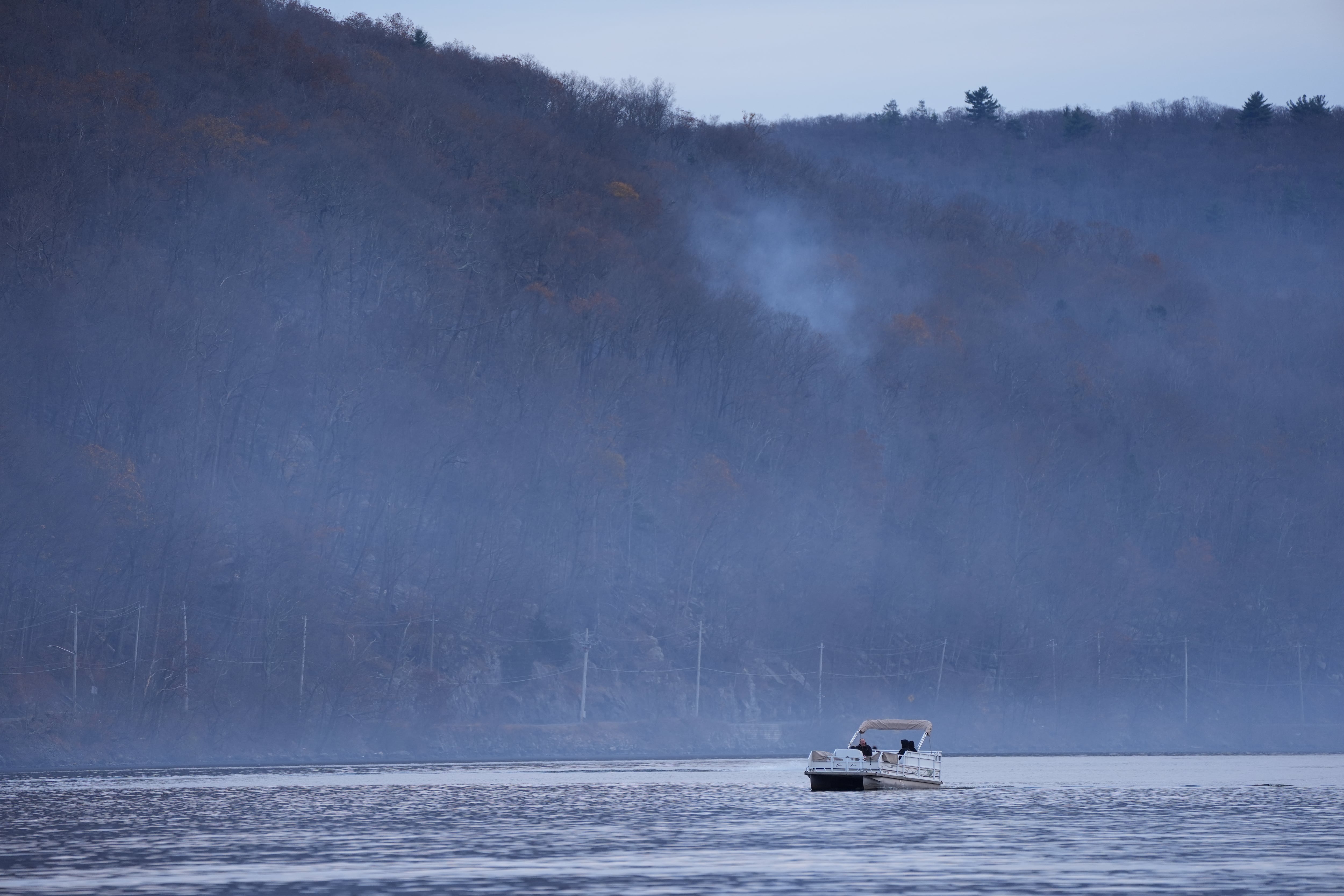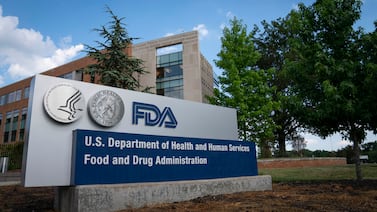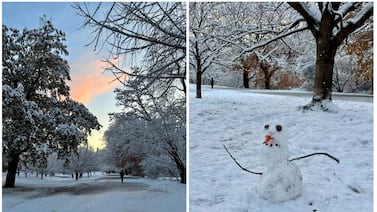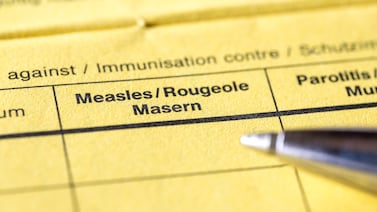Sign up for Your Local Epidemiologist New York and get Dr. Marisa Donnelly’s community public health forecast in your inbox a day early.
I didn’t expect to write this post for our New York community when I moved here from California, where wildfires are common and worsening. Yet wildfires are burning across New York, New Jersey, and Connecticut, making it important to understand their impact on our health and how to stay safe.

Over the past couple of weeks, multiple fires have ignited across New York, New Jersey, and Connecticut.
- The Jennings Creek fire along the New York-New Jersey border has burned more than 5,000 acres, making it the largest wildfire in New York since 2008. (Healthbeat reported on this recently.)
- Over the weekend, strong winds led to the voluntary evacuation of 165 houses in Warwick, New York.
- Last week, an 18-year-old New York State Parks employee died while responding.
- Between Oct. 29 and Nov. 12, the Fire Department of New York City responded to 229 brush fires — the most in a two-week period in city history.
- Brush fires have occurred in Brooklyn’s Prospect Park, Manhattan’s Inwood Park, and Queen’s Alley Pond Park.
With dry and windy conditions expected to continue for the next few weeks, fires may take longer to put out, and additional fires may start.
Tips to prevent wildfires
This fall has been abnormally dry in New York state, making it easier for wildfires to ignite and spread quickly. Because it has been so dry, much of New York state is under a drought warning.
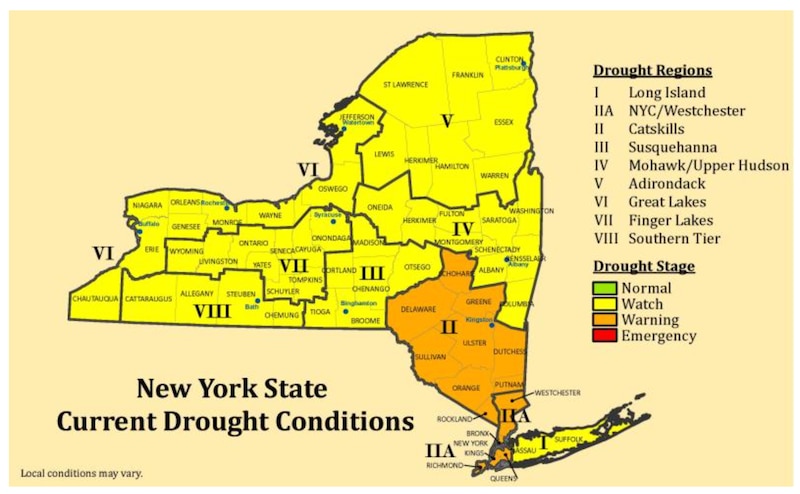
To reduce the risk of new wildfires, Gov. Kathy Hochul recently issued a statewide fire ban until Nov. 30. The FDNY also issued a public service announcement sharing these tips for how to reduce brush fires:
- Do not use fire pits, bonfires, campfires, or open cooking fires at least until Nov. 30.
- Do not grill outside in New York City. Outdoor grilling is banned in city parks until the end of the drought watch.
- If you are elsewhere in the state and you must grill, be very careful and stay away from dry grassy areas. Keep a bucket of water and fire extinguisher within easy reach.
- Dispose of cigarette butts and ashes properly.
- If you see a fire, call 911.
Breathing in any kind of smoke isn’t healthy
Poor air quality from wildfire smoke poses health risks to everyone, but some groups are especially sensitive:
- Older adults
- Pregnant people
- Children
- People with pre-existing respiratory and heart conditions
Why? Wildfire smoke contains various gasses and particles, but the most concerning are fine particles known as PM2.5. These particles measure less than 2.5 micrometers in diameter (smaller than a human hair), and can penetrate deep into the lungs and enter the bloodstream, causing both immediate and long-term health effects.
Symptoms can range from mild (e.g., eye irritation) to serious health impacts (e.g., asthma exacerbation or heart issues). Recent studies have shown increases in hospitalizations, heart attacks, and strokes during periods of elevated PM2.5 exposure from wildfire smoke. Health risks increase the longer you’re exposed to smoke and the more dense the smoke is.
Monitor the air quality in your neighborhood
Air quality is measured by sensors that detect the concentration of pollutants in the air. Results are reported as the Air Quality Index, which is a number between 0 and 500. The higher the AQI, the more polluted the air is, and the higher the health risk. There are six AQI levels to describe levels of health concern, and what activities should be avoided at each level. When the AQI reaches 50 (the yellow category), people who are more sensitive to poor air quality should reduce strenuous activity outdoors (like working out). Once the AQI hits 100 (the orange category), everyone should reduce strenuous activity outdoors.
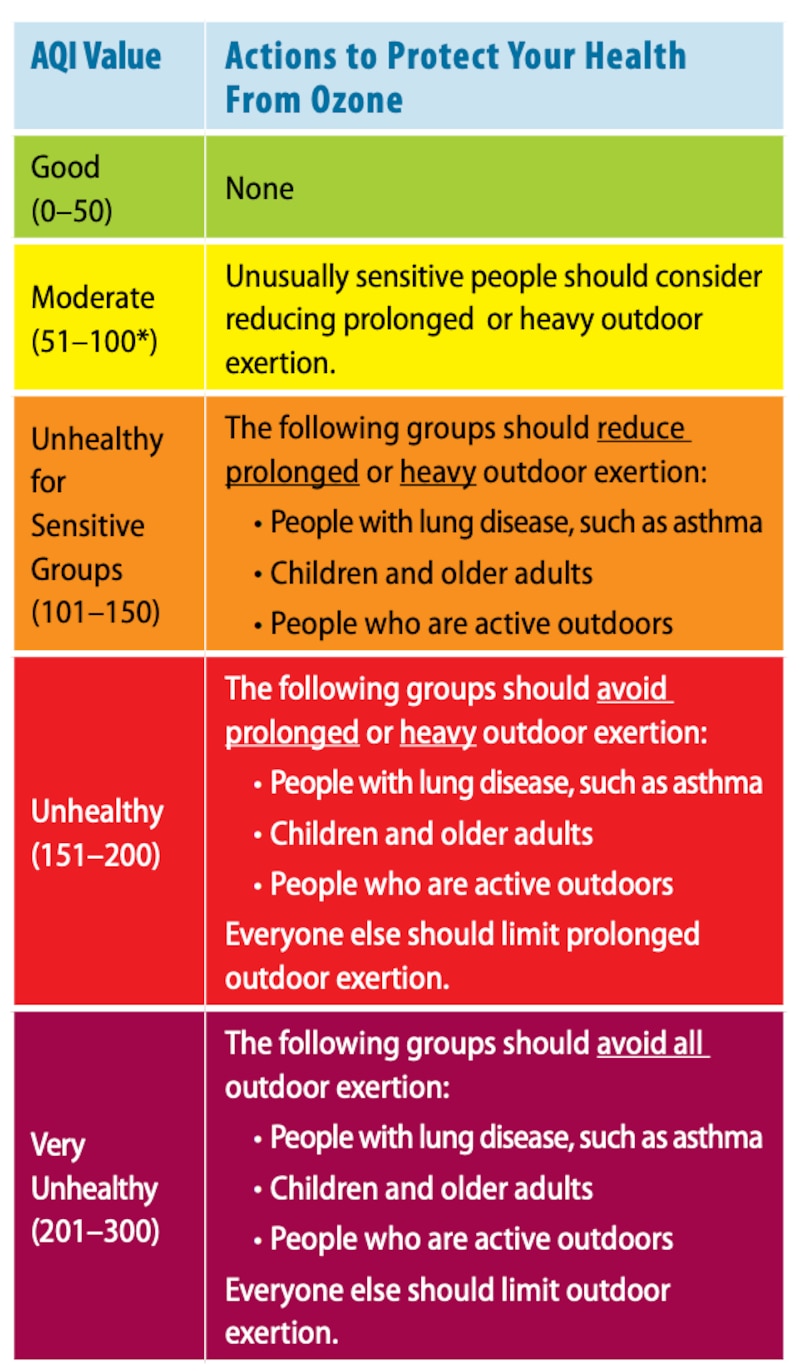
The New York Department of Health issued a health advisory last week when the AQI reached over 100. You can easily check the air quality of your local area on some weather apps, AirNow, or download the EPA’s AirNow mobile app.
At a recent glance, air quality is good or moderate in most of New York, but it’s good to check this frequently if there are wildfires around — air quality can change rapidly over the course of a day.
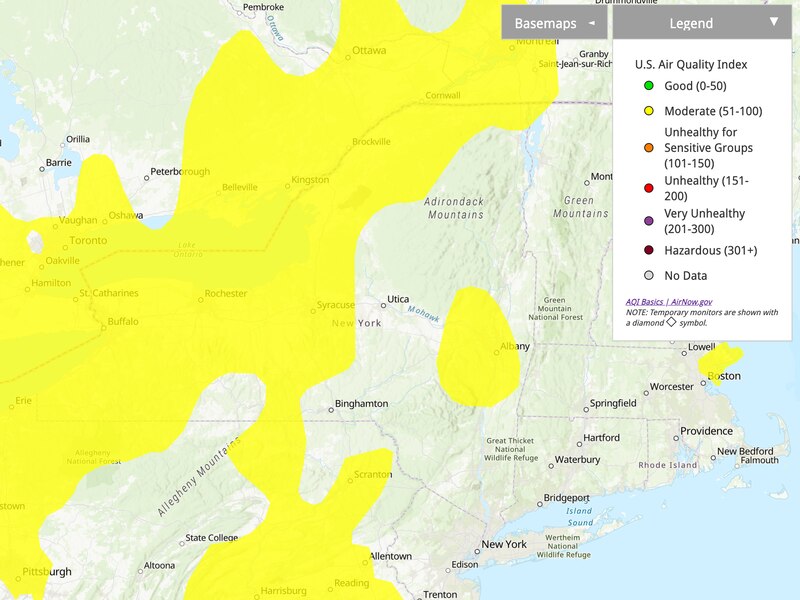
What can I do to avoid health effects of smoke?
The Centers for Disease Control and Prevention suggests multiple ways to reduce your risk. These include:
- Stay indoors, if possible.
- Keep your indoor air as clean as possible. Run an air conditioner if you have one, but keep the fresh-air intake closed.
- Use an air filter/purifier. Use a freestanding indoor air filter with particle removal.
- Do not add to indoor pollution. Do not use candles, fireplaces, or smoke tobacco. Do not vacuum because it stirs up particles inside your home.
- Wear an N95 mask outside. Recent research found that N95s reduced hospitalizations from wildfire smoke by 30%. In other words, it offers some protection, at least in the short term, for example while running to the grocery store. Cloth or paper masks and tissues will not filter out the smoke.
It seems like we are getting more wildfires. Why?
We know that changing climate trends, like warmer temperatures and less rain, are associated with a longer fire season, more frequent fires, and more intense fires that spread farther. The New York City Department of Environmental Protection commissioner reported that this October was the driest in New York City in over 150 years. Higher temperatures and drought conditions have made our region more fire-prone, even into the fall.
Bottom line
With drought conditions and dry winds in New York, wildfire risk is very high. Report any fires and avoid wildfire smoke as much as possible. Stay safe!
Love,
Your Local Epidemiologist
Dr. Marisa Donnelly, a senior epidemiologist with wastewater monitoring company Biobot Analytics, has worked in applied public health for over a decade, specializing in infectious diseases and emerging public health threats. She holds a PhD in epidemiology and has led multiple outbreak investigations, including at the California Department of Public Health and as an Epidemic Intelligence Service Officer at the Centers for Disease Control and Prevention. Marisa has conducted research in Peru, focusing on dengue and Zika viruses and the mosquitoes that spread them. She is Healthbeat’s contributing epidemiologist for New York in partnership with Your Local Epidemiologist, a Healthbeat supporter. She lives in New York City. Marisa can be reached at mdonnelly@healthbeat.org.

